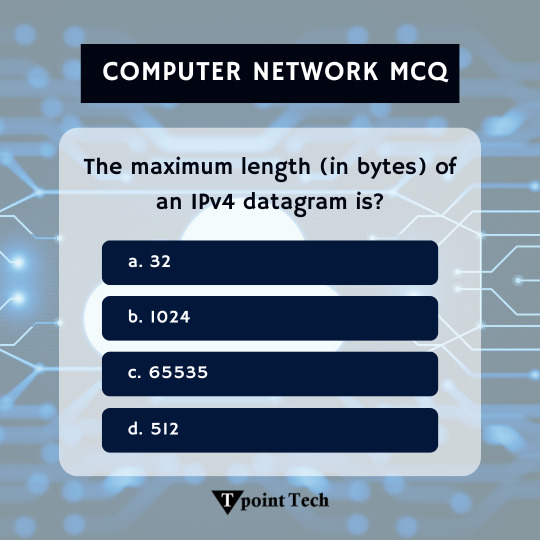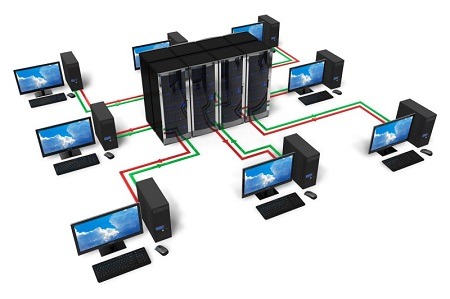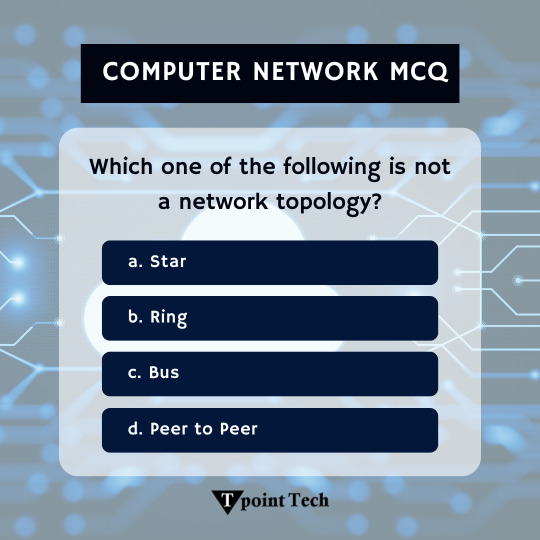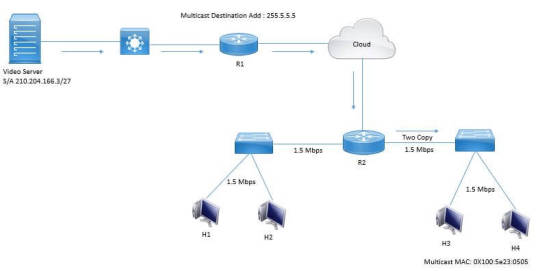#computernetwork
Explore tagged Tumblr posts
Text
Types of network in the computer System
In computer systems, networks are categorized based on their size, range, and purpose. Here are the main types of networks:
1. PAN (Personal Area Network)
Range: A few meters (typically within a room).
Used for: Connecting personal devices (e.g., smartphone, laptop, tablet).
Example: Bluetooth connection between a phone and wireless earbuds.
2. LAN (Local Area Network)
Range: A single building or campus.
Used for: Connecting computers within offices, homes, schools.
Example: Office network or home Wi-Fi.
Common Technologies: Ethernet, Wi-Fi.
3. MAN (Metropolitan Area Network)
Range: A city or large campus.
Used for: Connecting multiple LANs within a metropolitan area.
Example: City-wide Wi-Fi networks or university networks spanning multiple buildings.
4. WAN (Wide Area Network)
Range: Across countries or continents.
Used for: Connecting LANs and MANs over large distances.
Example: The Internet is the largest WAN.
Technologies: Fiber optics, satellite, leased lines.
5. WLAN (Wireless Local Area Network)
Subtype of LAN
Used for: Wireless communication in a LAN environment.
Example: Home or office Wi-Fi.
6. CAN (Campus Area Network)
Range: A college or business campus.
Used for: Connecting multiple LANs in a limited geographical area.
Example: University network interlinking libraries, labs, and dorms.
7. SAN (Storage Area Network)
Purpose: Specialized network for high-speed data storage access.
Used for: Data centers and enterprise-level storage solutions.
Not for: General computer communication.
8. VPN (Virtual Private Network)
Not a physical network but a virtual layer over existing networks.
Used for: Securely connecting remote users to private networks over the internet.
Example: Remote workers accessing company resources securely.
0 notes
Text

🔗 Computer Network MCQ 📡💻
Test your knowledge of computer networks with this set of multiple-choice questions! 🌐 These questions cover network topologies, protocols, OSI model, IP addressing, TCP/IP, routers, and security. Perfect for students, competitive exams, and IT professionals! ✅
👉 Take the quiz here: https://bit.ly/42WzYon
0 notes
Text

Advance Your Skills with Computer Network Course at George Telegraph
Join George Telegraph to advance your computer network skills. Learn from experts, gain practical experience, and boost your career prospects.
Visit Us at Our Official Website
0 notes
Text
Diploma Course In Computer - The George Telegraph Training Institute
The great thing about diploma courses is that students can take them after 10th standard alone. They do not have to wait till any further to finish this course. Computer application, hardware and networking are the most commonly enrolled fields in this subject. It remains to be one of the most sought after courses which students are fond of for the enhancement of their career.
Learn More: https://www.georgetelegraph.com/diploma-course-in-computer-after-10th.aspx

#computerhardwarecourse#hardwareandnetworking#hardwareandnetworkingcourse#diplomacourseincomputer#computerhardwareandnetworking#computernetwork
1 note
·
View note
Text
youtube
Computer Network For Bihar Computer Teacher 2023 & IB Junior Intelligence Officer -🔴 Live Class |L-6
NIMBUS Learning is an online learning channel for GATE, SSC Jen, PSUs, and other state je /Ae exams like UPPSC, RPSC, BPSC, UPPCL, RSEB, etc. Subscribe now for daily Free Je/Ae, GATE live online classes in all branches such as civil, mechanical, electrical, electronics, chemical, and computer science engineering.NIMBUS Learning is an initiative of the Engineers Academy in online coaching. Engineers Academy was established in 2011 and has fostered admirable heights to become one of the best coaching institutes in Jaipur, Delhi, Patna, Ranchi, Lucknow, and in other 15 cities of India where we are having 25+ coaching centers.
Register for Free Trial here
📌 Get A Call Back:- https://urlzs.com/GBJFX
📌 GATE 2024/25 Classroom Course:-https://bit.ly/3ul9WYl
📌 ESE 2023/24 Classroom Course:- https://bit.ly/2ZDFjzm
📌 SSC-JE & State-AE/JE Classroom Course:- https://bit.ly/3kaU1XO
📌 Fill out Google Form For Interview Guidance:- https://bit.ly/39RvcN9
📌 Call us at 7374000888/999 or Whatsapp: 8094441777
#computernetworkclasses#bpsc#bpsc2023#bpsc2023classes#computernetwork#computerteacher#nimbus_learning#biharbpsc#biharbpsccomputer#computerclasses#bpsconlinecourse#Youtube
0 notes
Text
🚀 Accelerate Your Indoor Fiber Optic Deployments with Sun Telecom!
Looking for a fast, reliable, and future-ready fiber optic solution for apartments, high-rises, or commercial spaces? 🌐
Sun Telecom's Indoor Single-core Pre-connect Solution is engineered for speed, simplicity, and scalability. Say goodbye to complex installations and hello to plug-and-play performance!
🔧 Key Benefits: ✅ Fast Installation – Pre-terminated, factory-tested cables ✅ No Field Terminations – Just connect and go ✅ Lower Labor Costs – Minimal tools and skills required ✅ Reliable Performance – Long-term stability with minimal maintenance ✅ Scalable Design – Ready to grow with your network
Ideal for MDUs, smart buildings, and commercial applications, this solution features a smart modular setup.
🌍 Trusted by customers worldwide – build your network the smart way with Sun Telecom!
Any needs, WhatsApp us: https://api.whatsapp.com/send/?phone=8618601637875&text&type=phone_number&app_absent=0

#IndoorSinglecorePreconnectSolution#FTTR#FTTH#fibertothehome#FTTA#fiberoptic#FTTx#survelliance#CATV#computernetworks#telecomengineering#fiberopticcable#telecomconsult#OSP#cabling#smartcity#fiberopticsolution#SunTelecom
0 notes
Text
Computer Network Interview Questions
🖥️✨ Computer Network Interview Questions and Answers – Your Easy Prep Guide! ✨🖥️
When you hear the term Computer Networks, does your mind jump to routers, IP addresses, or maybe that one time your Wi-Fi betrayed you during an online class or meeting? 😂 Well, jokes aside, computer networking is one of the core subjects for students from CS/IT backgrounds – and guess what? Interviewers LOVE to ask questions from this topic.
Whether you're preparing for your first technical interview or brushing up for a campus placement, having a solid knowledge on basic networking concepts can make a real difference. From understanding how data travels across the internet to knowing what happens behind the scenes when you type a URL into your browser – networking concepts are everywhere. 💻
🚀 Top Computer Network Interview Questions & Answers 🔍
1. What is a Computer Network? A computer network is a group of two or more computers connected to each other so they can share resources, like files, printers, or the internet. The connection can be wired or wireless.
2. What’s the difference between LAN, MAN, and WAN?
LAN (Local Area Network): Covers a small area like your home or office.
MAN (Metropolitan Area Network): Covers a city or a large campus.
WAN (Wide Area Network): Covers large distances, like the internet.
3. What is an IP address? An IP address is a unique number assigned to every device connected to a network. It helps identify your device and allows it to communicate with other devices.
4. What is DNS? DNS (Domain Name System) translates domain names like google.com into IP addresses. It’s like your phone's contact list – you don’t memorize numbers, just names.
5. What is the difference between TCP and UDP?
TCP (Transmission Control Protocol): Reliable, sends data in order, and checks for errors. Used for things like emails and web browsing.
UDP (User Datagram Protocol): Faster but less reliable. Used for streaming videos or online games.
6. What is a Router? A router connects different networks together and directs data where it needs to go. It's what allows you to use Wi-Fi at home.
7. What is OSI Model? Can you explain its layers? The OSI Model is a framework that shows how data travels over a network. It has 7 layers:
Physical
Data Link
Network
Transport
Session
Presentation
Application Think of it like a ladder where each step adds more meaning to the data.
8. What is the difference between HTTP and HTTPS? HTTPS is just like HTTP, but secure. The “S” stands for Secure. It uses encryption to protect your data.
9. What is a MAC address? A MAC address is a unique hardware ID for your device's network card. Think of it like a digital fingerprint.
10. What is a Firewall? A firewall is a security system that monitors and controls incoming and outgoing network traffic. It helps protect your system from hackers or unwanted access.
📌 Need more? We’ve covered more in-depth questions along with real examples and diagrams on our blog here 👉 🔗 Read Full Blog - Computer Network Interview Questions & Answers

1 note
·
View note
Text
Computer Networking for Beginners: Build a Strong Foundation
Start your networking journey with EasyShiksha's beginner-friendly course. Learn essential concepts like TCP/IP, DNS, and HTTP, and gain hands-on experience in setting up and troubleshooting networks. Ideal for aspiring IT professionals and those preparing for certifications like CompTIA Network+ or CCNA.
0 notes
Text
Learn About Computer and fundamental of computer..with the crazy dev.
find more articles about web development, programming languages, computer network and many more.
0 notes
Text
Server Products Types: Understanding Size, Share, and Growth Trajectories
The global server market size is estimated to reach USD 175.29 billion by 2030, exhibiting a CAGR of 9.8% from 2024 to 2030, according to the recent reports of Grand View Research, Inc. Continued advances in emerging technologies, such as AI, IoT, big data, cloud computing, and 5G, and the growing adoption of innovative solutions based on these technologies across various industries and industry verticals are driving the demand for edge data centers in emerging economies.

Server Market Report Highlights
The rack segment is expected to register a CAGR of 11.3% from 2024 to 2030 in the server market. The segment growth can be attributed to the growing need for scalable data centers, high-density computing, and advancements in emerging technologies, such as IoT, cloud computing, and edge computing, creating vast growth opportunities for market players.
The large enterprise segment is expected to register a CAGR of 10.4% from 2024 to 2030 in the server market. Large enterprises are shifting their focus toward hosted application servers because they can handle workloads from multiple sites, typically from the same database.
The direct segment is expected to register a CAGR of 11.0% from 2024 to 2030 in the server market. Direct distribution can shorten lead times by sending goods directly to customers when they are ready for deployment. These benefits are expected to further supplement the growth of the direct channel during the forecast period.
The IT & telecom segment expected to register a significant CAGR from 2024 to 2030 in the server market. The IT industry has seen a growing implementation of cloud-based services over on-premises ones. Subscribers now get most services through a single service provider. Furthermore, mobile phones' constantly evolving multimedia capabilities are giving rise to new issues related to after-sales service delivery and execution.
Asia Pacific is anticipated to emerge as the fastest-growing region over the forecast period at a CAGR of 10.7% in the server market. The growth of the Asia Pacific market can be attributed to significant players in the region, including Baidu, Huawei Technologies Co., Ltd., Tencent Cloud, and Alibaba.com. Moreover, the region has been witnessing high growth in digitalization, especially in countries such as India.
For More Details or Sample Copy please visit link @: Server Market Report
As businesses move to private and public clouds, edge cloud, co-location facilities, and data centers have started utilizing software-defined networks (SDNs) and virtualization to facilitate the implementation of new data analytics models. However, having realized that the incumbent servers cannot handle the complex workloads, market players in the region are introducing new server designs with higher computational power.
The cloud computing sector attracts small enterprises by offering scalable infrastructure and services. Cloud computing also offers benefits such as on-demand self-service, broad network access, resource pooling, flexibility in terms of cost and time, transparency in the form of usage reports and timely updates regarding consumption rates, and cost updates to customers. It not only helps deploy business quickly but also considerably reduces operational costs. Since data security and recovery are critical concerns for small organizations, they prefer to deploy data on private clouds.
Furthermore, companies are utilizing big data analytics to provide the best services to their customers. Cloud services assist in optimizing business processes for small enterprises. These factors would further supplement the demand for servers in small enterprises during the forecast period.
Server platforms have evolved to incorporate features and capabilities once considered add-ons and were integrated only for advanced deployments. The architecture, product capability, and management and development tools account for a substantial share of the total ownership costs of owning the servers. The total ownership costs include the initial design, deployment, and recurring costs. The initial design and deployment costs cover the costs incurred on hardware, software, installation & setup, integration & testing, and initial deployment. On the other hand, the recurring costs include the costs incurred for technical support & consultancy, implementation, management & administration, monitoring & diagnostics, server downtime, and upgrades.
Additionally, the rise of advanced applications requiring particular settings and substantial computational power from users and providers is fueling the shift toward cloud servers for optimized performance. Businesses increasingly turn to virtual or cloud servers to improve their worldwide networking potential and reduce the expenses associated with operating and maintaining their IT systems. Furthermore, cloud service providers must allocate considerable resources to maintain cooling systems due to physical servers' higher heat output. Consequently, strategies like server leasing and virtualization have become more popular lately.
List of Major Companies in the Server Market
ASUSTeK Computer Inc.
Cisco Systems, Inc.
Dell Inc.
FUJITSU
Hewlett Packard Enterprise Development LP
Huawei Technologies Co., Ltd.
Inspur
Intel Corporation
International Business Machines Corporation
Lenovo
#ServerMarket#DatabaseServers#FileServers#PrintServers#ProxyServers#EdgeServers#ServerNetwork#ServerComputer#ComputerNetworks#ServerTechnology#CloudServer#ServerHardware
0 notes
Text
Distributed Computing System: Features, Types and Examples

Computer networks and distributed systems
Distributed computing system simulates computer operations using many computing resources in different locations. It uses several computers, servers, and networks to complete computing jobs of various sizes and purposes.
It works in the cloud. While distributed cloud computing and cloud computing are similar in theory, distributed cloud computing can expand cloud computing across multiple continents.
Small, distributed computer systems with nearby components can use LANs to link components. WANs connect components in geographically dispersed distributed systems. Distributed systems share information using a complex message-passing system over any network.
It uses shared memory and numerous components to solve the most difficult computer problems. It requires precise synchronization and lots of computer power to analyze data, share files, and cooperate towards a common objective.
10 Distributed Computing Uses
The following examples demonstrate how distributed computing is employed across industries and platforms:
Distributed Computing
It is commonly used in the communications business. Telephone and cellphone networks are peer-to-peer networks. Internet and email are distributed computing examples that changed modern living.
The field of computing is being transformed by advances in AI and machine learning. Both fast-growing technologies require distributed computing system. AI and ML algorithms need lots of training data and continuous processing power.
Manage data
Distributed computing system breaks complex data management and storage activities into subtasks distributed across nodes, which act as clients or servers to recognize needs and issue requests or fulfil them. It speeds up database management and databases by breaking chores down. Data centres are part of distributed computing chains.
Energy
Distributed computing system helps smart-grid technologies regulate and optimize energy consumption in the energy and environmental sectors. Smart grids collect environmental data from input devices.
Finance
Distributed computing system equitably distributes massive computational loads across numerous platforms. It is also used by financial personnel for risk assessment. Distributed computing lets financial companies run massive calculations for better decision-making and strategy.
Manufacturing
Distributed computing balances load in large production operations to keep automation working smoothly. Distributed manufacturing applies the distributed cloud idea to globally dispersed production tools. Manufacturing designs and builds IoT devices that collect and send data.
Medical
Distributed computing enables many of modern medicine’s innovative technologies, including data-intensive robotic procedures. It can show patent procedures and drug creation using its stunning 3D images and video animations.
Retailers with both physical and online stores may have inventory issues. Distributed Order Management Systems (DOMS) offered by distributed computing assist modern merchants meet shifting customer expectations by running ecommerce apps smoothly.
Science
Scientific tasks like neural network training are increasingly using distributed computing system. Scientific computing uses distributed computing’s tremendous power to tackle massive scientific problems like space travel. It video simulations simplify scientific projections.
Videogames
Distributed computing helps MMOG providers create and run complex, real-time game environments. A sophisticated meshing of operating systems, networks, and processors lets thousands of end-user players enjoy an exciting gaming experience.
How are Distributed Computing Systems formed?
Although there are no firm definitions of distributed computing system, even the simplest ones usually have at least three components:
Primary system controller: The primary system controller controls and monitors a distributed system. Its main task is handling all server requests.
All shared data is stored in the system datastore, usually on the disc vault. In “non-cluttered” systems, shared data may live on one or more machines, but all computers need datastore access.
It platforms store all data in relational databases. Groups of users share data after this. Relational databases quickly align workers.
Beyond those essential components, distributed computing system can be customized for an organisation.
Computing systems may be scaled by adding machines, which is a major benefit.
The other major benefit is enhanced redundancy, so if one network machine fails, the system still works.
Distributed Computing System Aim
Distributed computing system aim to make a network work as a single system. Complex message-passing between components enables this cooperation.
Communication protocols manage message exchange and form a “coupling” between these components. You can express this relationship two ways:
Loose coupling: Two weakly connected components have a weak connection, thus changes to one won’t affect the other.
Tight coupling: Tightly connected components have so much synchronization and parallelism that “clustering” uses redundant components to maintain system survivability.
Another important idea is fault tolerance, which allows an OS to fix software or hardware failures while the system is running.
Distributed Systems and Parallel Computing
Distributed computing addresses the pros and cons of “concurrency,” the simultaneous execution of numerous operational instruction sequences. One of its advantages is concurrency, which allows shared resources and concurrent processing of several process threads. Parallel computing is different from parallel processing, which breaks down runtime jobs into smaller tasks.
Concurrency causes delay and traffic issues when data movement surpasses bandwidth.
Architectures for Distributed Computing
Distributed Computing types are characterized by their architecture:
Its client-server architecture allows it to work with multiple systems. A client requests input from the server, usually a task command or extra computing resources. The server completes the process and reports back.
Peer system: A “peer-to-peer” system uses peer architecture. Nodes in peer systems identify requirements, issue requests, and fulfil them. Peer systems have no hierarchy, thus programmes can freely communicate and transmit data via peer networks.
Middleware: Middleware is the “middleman” between programmes. Middleware is an app that serves two apps. Middleware also interprets. It allows interoperability apps on different systems to freely communicate data by translating them.
Three-tier system: Named for the number of layers used to illustrate programme functionality. Instead of storing data in the client system, the three-tier system stores information in its Data Layer. Web applications commonly use three-tier structures.
N-tier systems, also called multitiered distributed systems, channel unbounded network functions to other programmes for processing. N-tier architecture resembles three-tier architecture. Many web services and data systems use N-tier architecture.
Other distributed computing system paradigms exist besides these basic architectures:
Blockchain: Blockchain is a distributed database or ledger copied and synchronized across network machines. Blockchain distributes the source ledger to all chain computers for redundancy.
Grid computing: Grid computing uses grid frameworks and middleware applications to distribute non-interactive jobs. The scalable grid in the user interface acts as a massive file system.
Heterogeneous computing: This distributed computing method lets one computer system manage multiple subsystems. Heterogeneous computing processors work in parallel to boost performance and reduce task-processing times.
Distributed computing system is using microservices breaks software into smaller components, called “services.” APIs connect services frameworks, allowing component interaction.
Read more on govindhtech.com
#Computingsystem#Features#cloudcomputing#computernetworks#machinelearning#ai#ml#data#iotdevices#realtimegame#systemaim#software#hardware#Blockchain#computing#technology#technews#news#govindhtech
0 notes
Text

🔗 Computer Network MCQ 📡💻
Test your knowledge of computer networks with this set of multiple-choice questions! 🌐 These questions cover network topologies, protocols, OSI model, IP addressing, TCP/IP, routers, and security. Perfect for students, competitive exams, and IT professionals! ✅
👉 Take the quiz here: https://bit.ly/42WzYon
0 notes
Text
Learn Diploma Course In Computer Repairing-GTTI
Do you learn computer hardware and networking course by George telegraph gives you best classes in computer network they give to peruse computer programming certificate course to build a carrier after complete this computer repairing course for more details visit our sites.
More Info: https://www.georgetelegraph.com/diploma-course-in-computer-after-10th.aspx

#diplomacourseincomputer#computernetwork#computerhardwareandnetworkingcourse#computerhardwarecourseinkolkata#computerrepairingcourse#computerprogrammingcertificate
0 notes
Text

Gain a comprehensive understanding of multicast networking essentials and their role in modern data center environments. Unlock new possibilities for efficient data transmission. https://www.dclessons.com/multicast-introduction
#MulticastIntroduction#NetworkingBasics#MulticastRouting#InternetProtocol#ComputerNetworking#ITBasics#Networking101#DataTransmission#NetworkInfrastructure#DClessons
0 notes
Text
youtube
Computer Network For Bihar Computer Teacher 2023 & IB Junior Intelligence Officer -🔴 Live Class |L-3
NIMBUS Learning is an online learning channel for GATE, SSC Jen, PSUs, and other state je /Ae exams like UPPSC, RPSC, BPSC, UPPCL, RSEB, etc. Subscribe now for daily Free Je/Ae, GATE live online classes in all branches such as civil, mechanical, electrical, electronics, chemical, and computer science engineering.NIMBUS Learning is an initiative of the Engineers Academy in online coaching. Engineers Academy was established in 2011 and has fostered admirable heights to become one of the best coaching institutes in Jaipur, Delhi, Patna, Ranchi, Lucknow, and in other 15 cities of India where we are having 25+ coaching centers.
Register for Free Trial here
📌 Get A Call Back:- https://urlzs.com/GBJFX
📌 GATE 2024/25 Classroom Course:-https://bit.ly/3ul9WYl
📌 ESE 2023/24 Classroom Course:- https://bit.ly/2ZDFjzm
📌 SSC-JE & State-AE/JE Classroom Course:- https://bit.ly/3kaU1XO
📌 Fill out Google Form For Interview Guidance:- https://bit.ly/39RvcN9
📌 Call us at 7374000888/999 or Whatsapp: 8094441777
✅ BPSC Computer Teacher Vacancy Information Fill This Form :- https://shorturl.at/my359
✅ Fill out This Form IB JIO Vacancy Free Classes:- https://shorturl.at/exUX7
✅Download Nimbus Learning APP - https://bit.ly/30GZ3mY
#computernetworkclasses#bpsc#bpsc2023#bpsc2023classes#computernetwork#computerteacher#nimbus_learning#biharbpsc#biharbpsccomputer#computerclasses#bpsconlinecourse#bpsconlineclasses#Youtube
0 notes
Text
From Factory Floor to Global Projects
We recently welcomed a customer to our fiber optic cable facility here in China for an exclusive look at our end-to-end manufacturing process. We’ve just shipped these high-quality fiber optic cables to our customer! With 36 years of experience serving customers in over 130 countries and regions, we are dedicated to delivering high-quality, systematic, customized, one-stop Fiber Optic Total Solutions—engineered for performance and trusted by professionals worldwide. Your connectivity needs drive our innovation. Ready to build the future together? Contact us today!
WhatsApp us: https://api.whatsapp.com/send/?phone=8618601637875&text&type=phone_number&app_absent=0




#Telecommunications#FTTH#fibertothehome#fiberoptic#FTTX#CATV#OSP#telecomengineering#survelliance#fiberopticcable#telecomconsult#outsideplan#cabling#computernetworks#smartcity#suntelecom#CustomerVisit#OpticalCable#QualityMatters#GlobalConnectivity
0 notes